How it is staying at a luxury ryokan (Japanese guesthouse)
Total immersion in Japan’s culture at ryokan Madoka no Mori in Hakone:
No Japan trip is complete without staying at a ryokan, a traditional Japanese-style inn. When my husband and I traveled this country on a three-week trip (before the pandemic), we lodged at three different ryokans. And we were intrigued by this unfamiliar experience! Here I will go into our stay at the most upscale ryokan of our Japanese journey, ryokan Madoka no Mori in Hakone. Yet I will also include some aspects of the others to give you a full picture.
While your travel plans are probably still on hold, you need something to look forward to. Have you ever thought about visiting Japan? If so, you certainly want to know more about the ryokan experience. Before going into details of our stay at the high-end ryokan Madoka no Mori, some general info about this kind of Japanese-style inns.
Other posts of my mini-series on Japan cover these topics: three-week itinerary, luxury hotels, finding and reserving (Michelin) fine dining, gourmet restaurants and two hidden gems.
About the ryokan experience in Japan
These inns have been part of the Japanese culture for many centuries. Samurai, traders and others spent their nights there while traveling the route between the capital city of Edo (Tokyo) and the Imperial Palace in Kyoto.
Ryokans are often smaller than the typical hotels. In many cases they are family run and handed down from generation to generation. There are many different styles of ryokans. They range from standard ones with plain and simple guest rooms to luxurious ones offering Japanese hospitality at its finest.
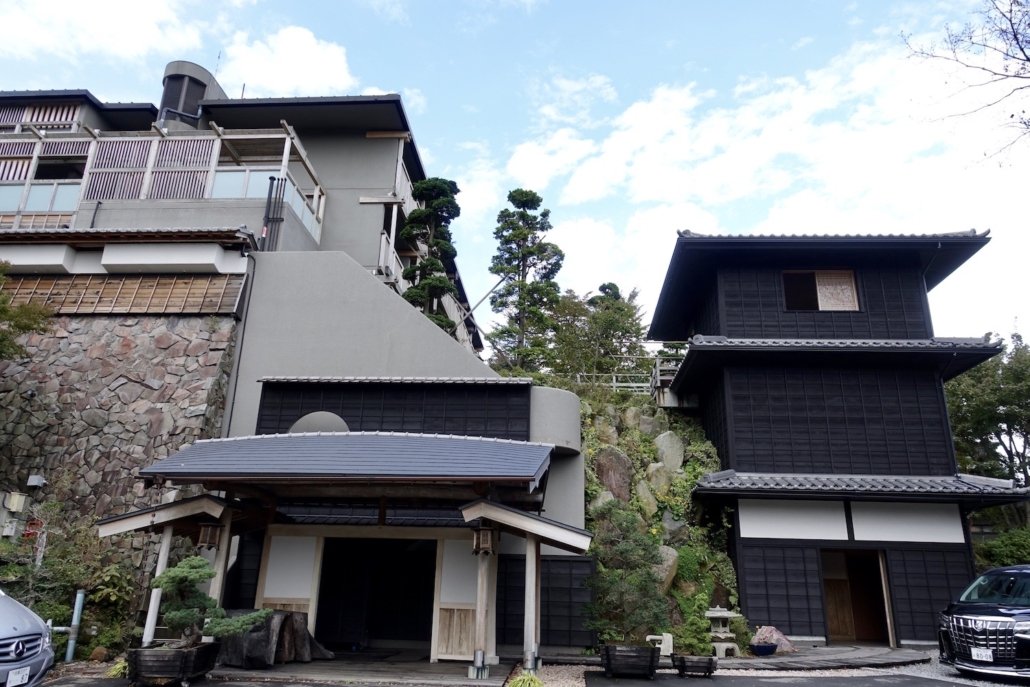
In terms of furnishing, ryokans tend to be rather minimalistic. Chances are that your room will only provide a low table with some chairs without legs. It may be that you will not see any bedding. In this case, the staff lays it out for you while you are having dinner. And it will be a traditional futon bedding. The flooring is tatami matting where you wear neither your shoes nor the slippers provided by your personal attendant.
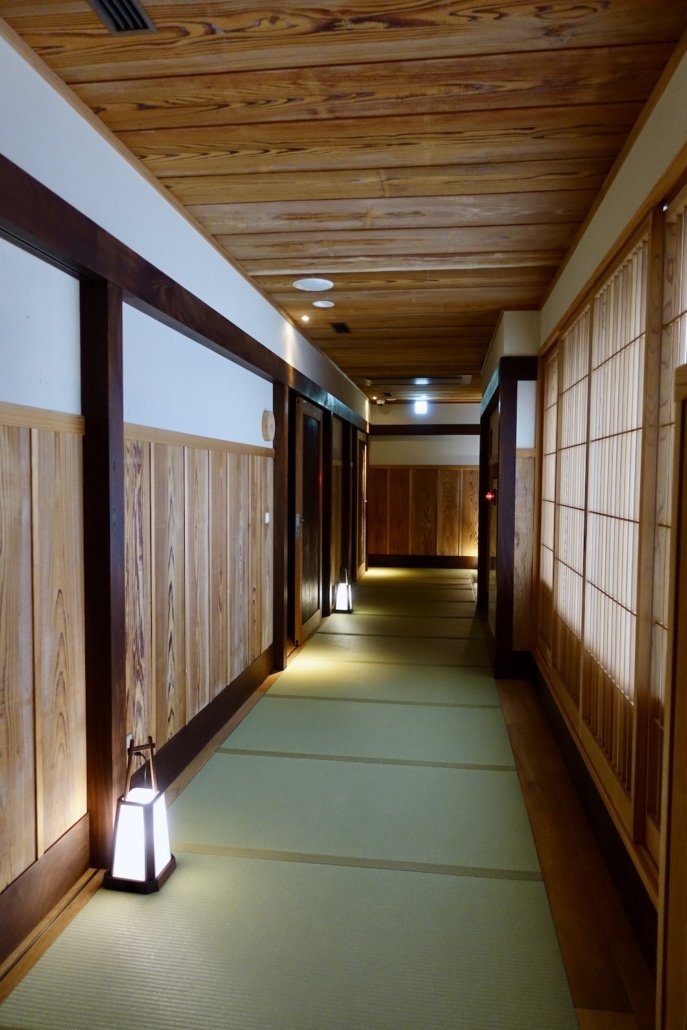
You leave your shoes by the entrance upon entering the ryokan. You also get a yakuta (robe), which you may wear everywhere you go inside the ryokan, for the meals too.
As to bathrooms, you will have your own private en suite ones if you stay at luxury ryokans. Many traditional ryokans however – even in the mid-range category and higher – , do not provide those. Instead you go to the onsen (natural hot springs). This is an important part of the Japanese culture and another typical element of a ryokan experience. Here you wash yourself before entering the onsen naked. Some are gender-separated, others are communal.
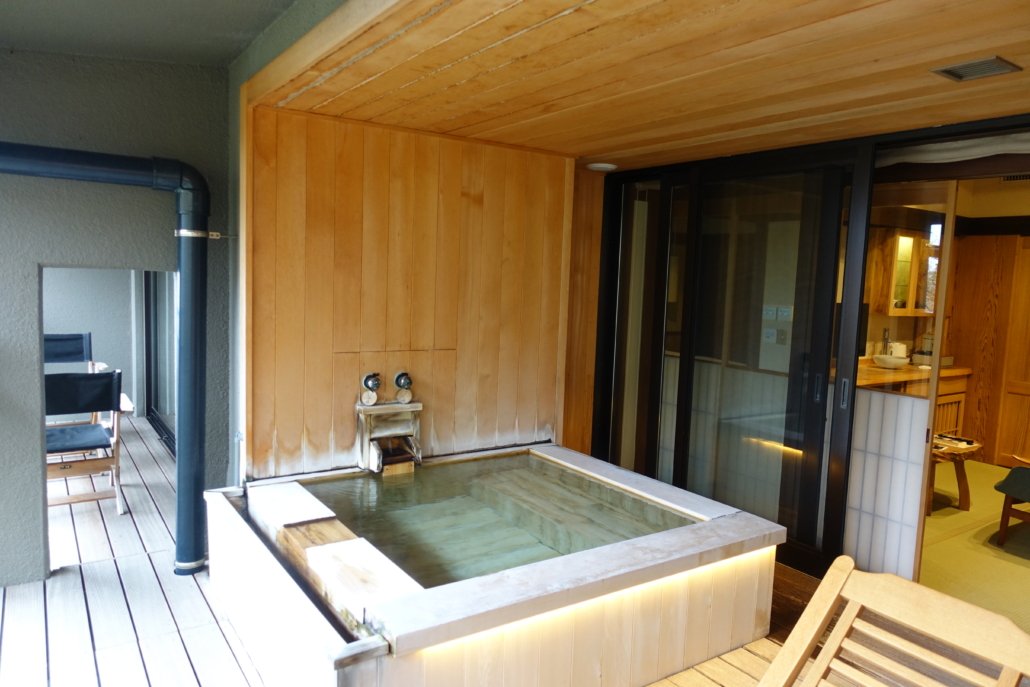
There is yet another attraction that makes staying at a ryokan so appealing. And this is the traditional multi-course dinner (kaiseki ryori) and the Japanese breakfast, both included in the room rate (half board).
About meals in ryokans
Both meals – dinner and breakfast – typically feature beautifully presented and colorfully arranged local and seasonal specialties. You have them either in your private room, in a semi-private dining room (one party) or in a common dining room. While every ryokan has its own ways of serving these meals, certain local produce are usually part of them. Think of vegetables (fresh, fermented and pickled), fish (often also from nearby rivers), meat and Japanese staples just as miso soup or rice.
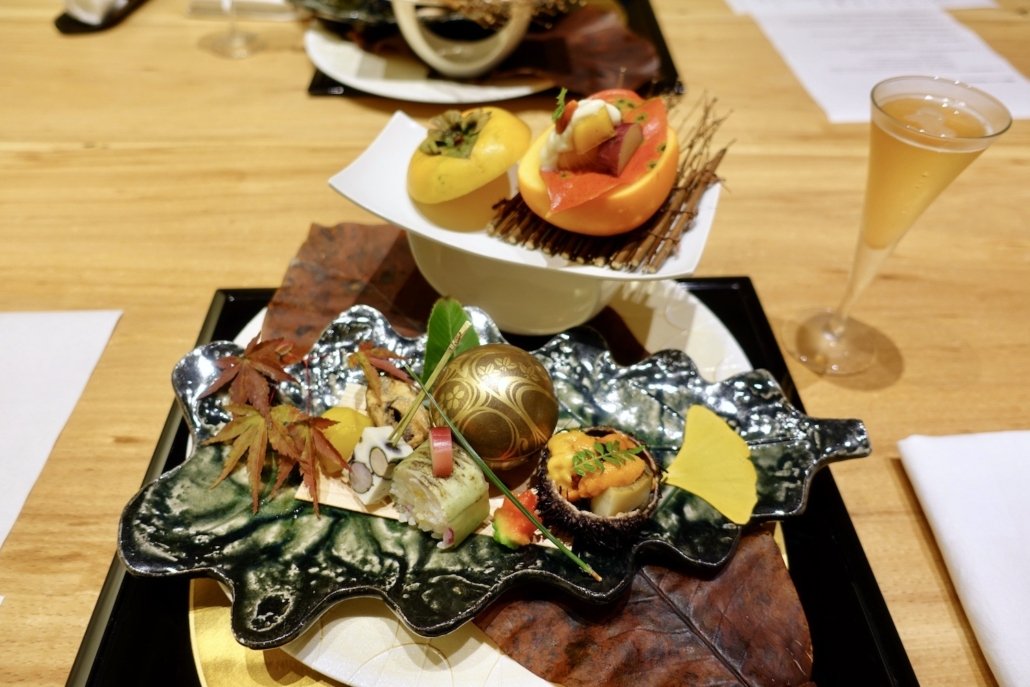
As to breakfast, many ryokan serve a Japanese style breakfast only. Yet there are also inns that offer a Western style option or a mix of of both, Japanese and Western food. The typical Japanese breakfast reminds of the classical kaiseki meal (see next chapter) where you get several dishes on small plates and bowls.
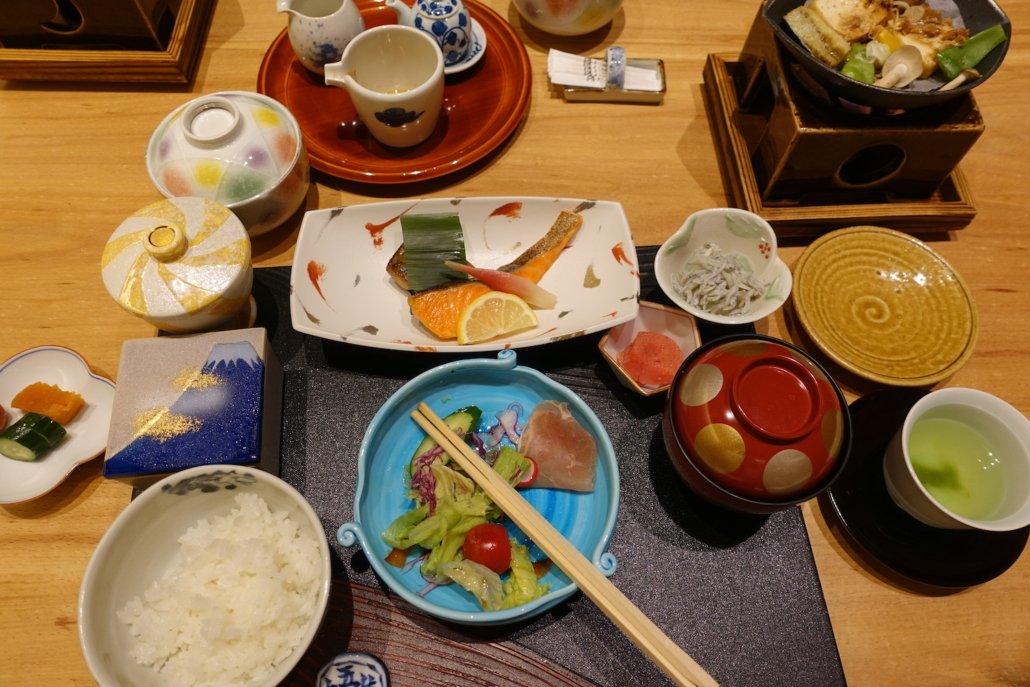
About kaiseki ryori (dinner)
Kaiseki Ryori is a traditional Japanese multi-course high-end dinner. Originally, kaiseki was a simple vegetarian meal that you got on the traditional tea ceremony. Later on, it became more elaborate and today, you receive it in specialized restaurants or ryokans.
There is a series of small dishes, which are beautifully arranged.
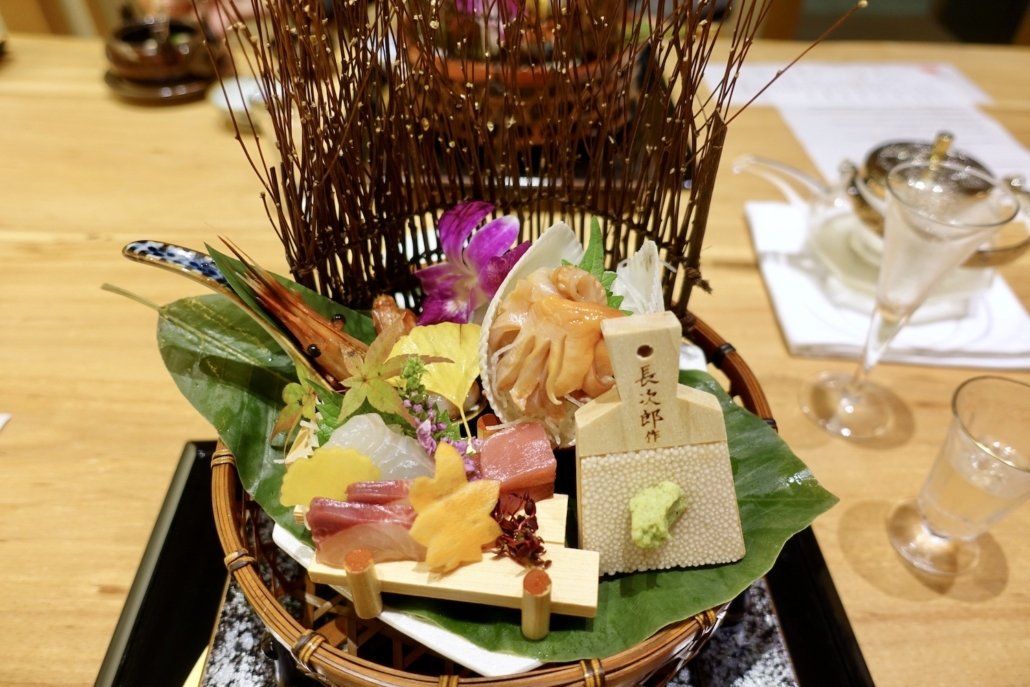
It is not about volume but more about the art of balancing out taste, appearance, color and texture. It usually includes an appetizer, a soup, sashimi, and several other dishes. As to the latter, the preparation is different with each dish (boiled, grilled, deep fried, steamed, vinegared). And the whole is accompanied by rice, miso soup and pickles (served towards the end of the meal). It ends with a dessert, usually fresh fruit.
After all these preliminary remarks now to the luxury ryokan experience I want to report on.
Luxury ryokan Madoka no Mori in Hakone
This was the most luxurious and at the same time the most traditional ryokan we stayed at on our Japan trip. Furthermore, we lodged at a comfortable yet simple one in Kiso Valley. Here they cater to one party only. Then we were at a fairly luxury ryokan in Takayama. This one was traditional yet with certain Western elements, at least for foreign travelers. As announced, I will include some elements of the two latter in my reporting.
Location
Madoka no Mori is located high up in the mountainous area of Hakone. This town is known for its hot springs, natural beauty and the view of Mt. Fuji across Lake Ashinoko.
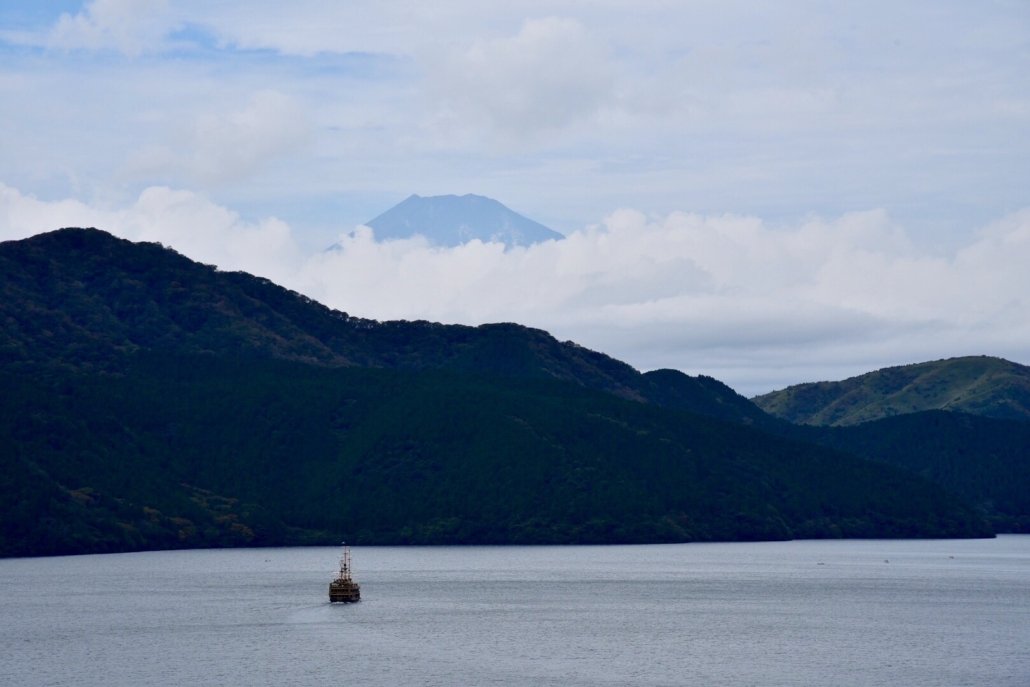
It is a popular place to go for Japanese and foreign travelers likewise looking for a break from Tokyo. You reach it from the capital in about three to four hours by train or by car.
Premises
As mentioned, it is not your standard ryokan but a luxury version of this type of Japanese accommodation. When my husband and arrived by car (before check-in time), we got a warm welcome. At the entrance we had to take off our shoes and were ushered to the lobby. Here we could choose a welcome drink. The floor, covered with tatami mats, was even heated!
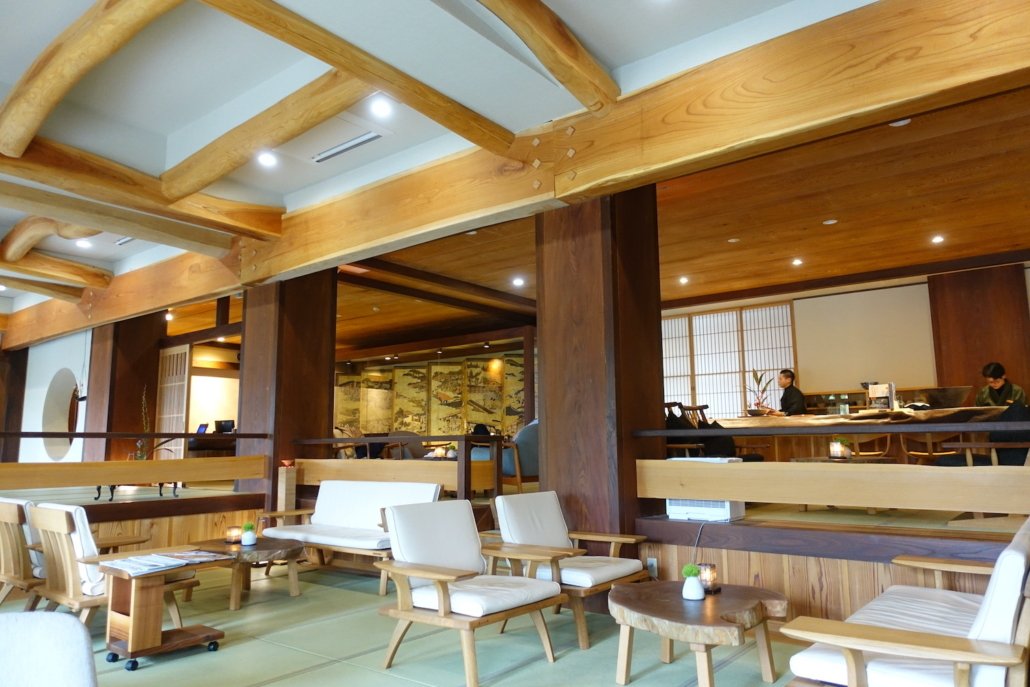
Onsite there is of course a public onsen (for ryokan guests, gender-separated). We had a look at it but did not use it as we had a private one in our room. To give you an impression of a public onsen, here two pictures of the one we had at Takimi Onsen Inn in Nagiso (Kiso Valley). This is a small inn that was to the exclusive use of my husband and me on our stay. Please note, the following two pictures are not from Madoka no Mori!
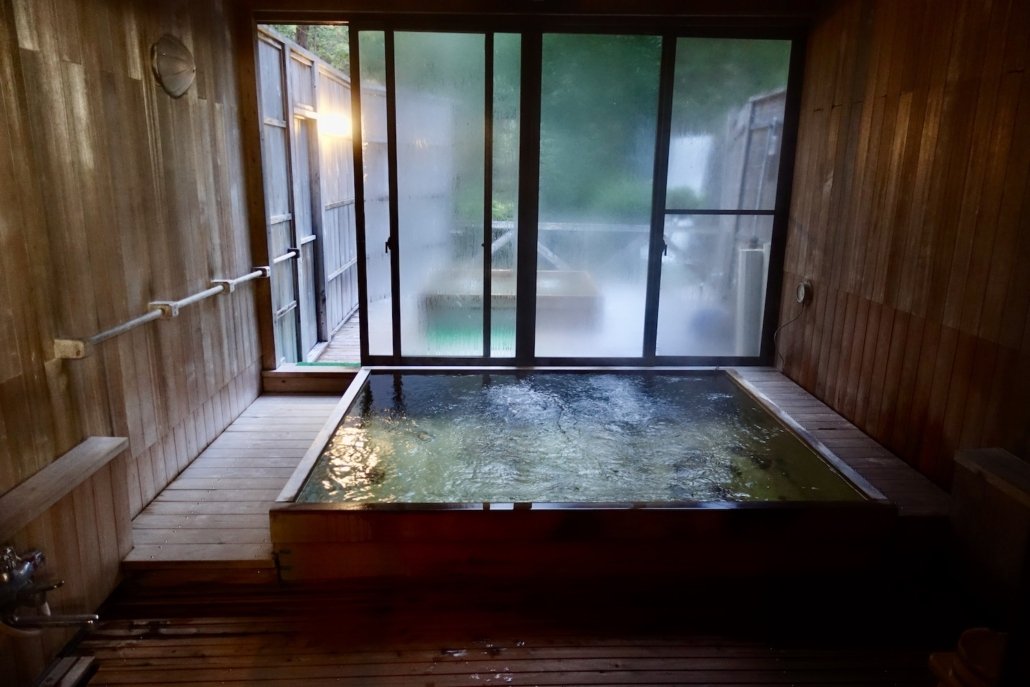
Rooms/Pricing
Misaki, our personal attendant, brought us to our room, along corridors covered with tatami mats. Out of the twenty different rooms in the categories of suite, deluxe room and standard room we had opted for the Ebine room (deluxe category). It has a generous layout, a living room with an integrated washbasin complete with chair, a separate bedroom, a shower and our highlight, our own private onsen. It is on the spacious balcony, with views of greenery. The room features high-quality furnishing, a lot of wood from the Hida region and of course tatami mats.
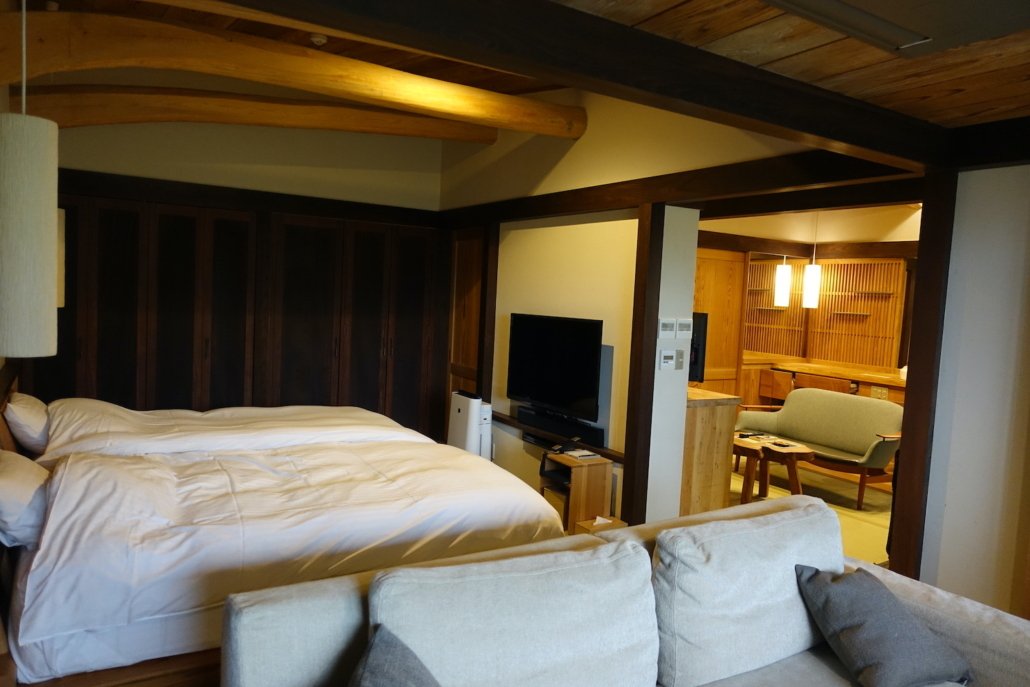
Here I would like to throw in two pictures of a more traditional ryokan guest room. And this after dinner time, when the bedding is set up for sleeping. They stem from our Japanese-Style Deluxe Room at Honjin Hiranoya Kachoan in Takayama, just to give you the full idea … Please note, the next two pictures are not from Madoka No Mori.
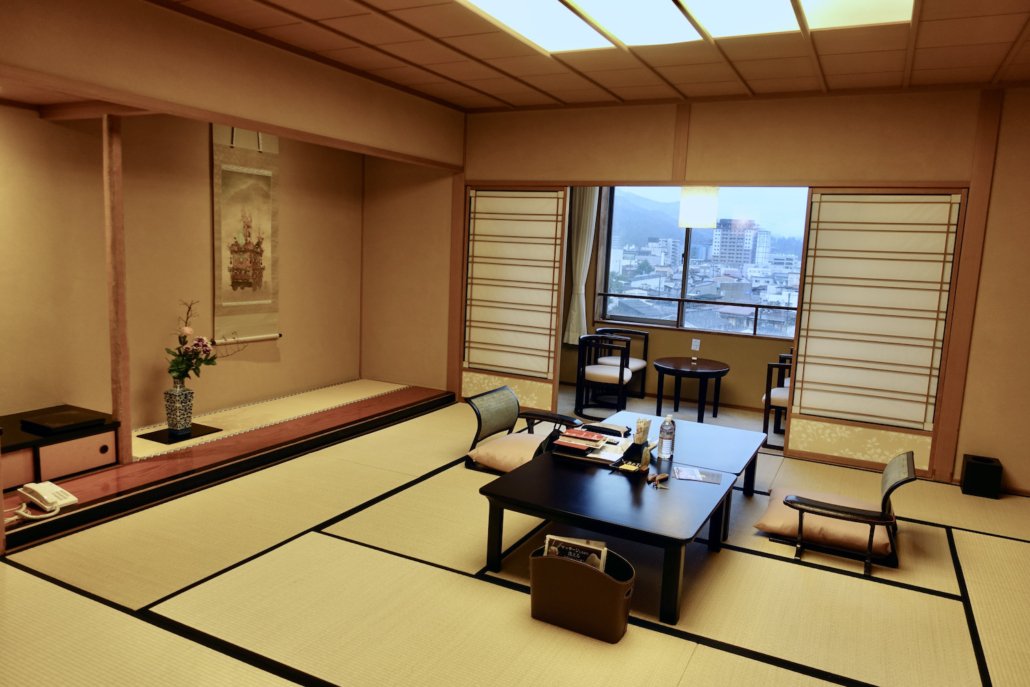
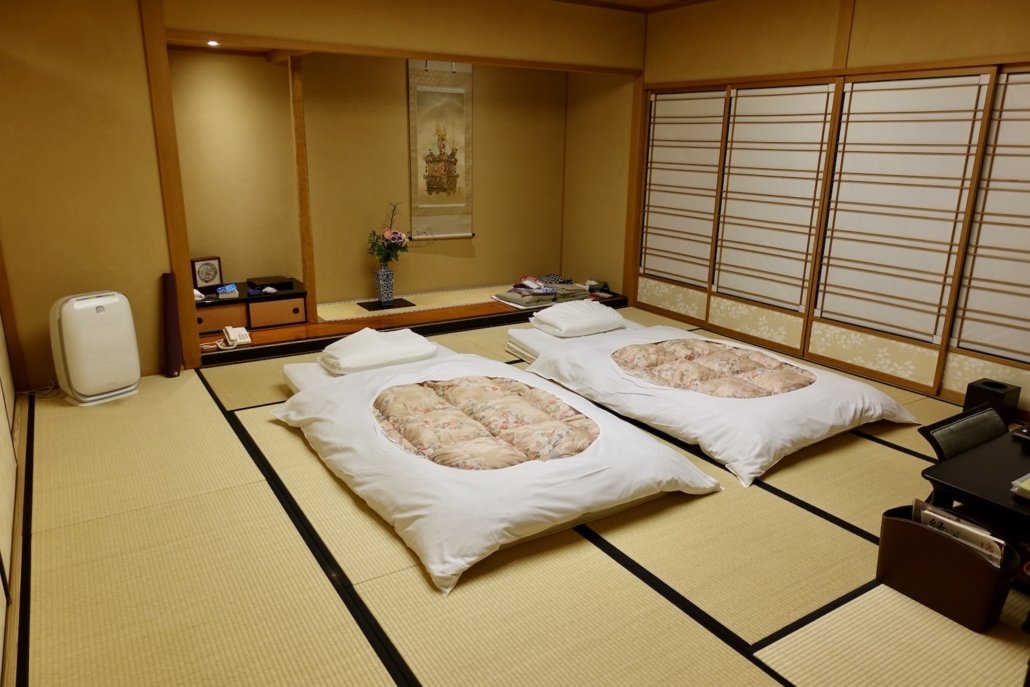
Our personal attendant explained to us all we had to know about the room and the ryokan. She also gave us a yakuta (robe to wear inside the ryokan) and pyjamas. And it was time to enjoy our first onsen, we had just arrived from the airport.
As you would expect, staying at Madoka no Mori is pricey but totally worth it. After all, it is not only a high-end accommodation but you are on half board, too. This includes an elaborate kaiseki ryori dinner and a likewise Japanese breakfast. We paid 116,000 JPY (a bit more than 1,000 SFR/US$ per night and room). This seems adequate in light of the cost of a kaiseki ryori dinner that will cost you from 15,000 JPY per person (130 SFR(US$) upwards.
After having a look around in the ryokan – what a beautiful and serene place –
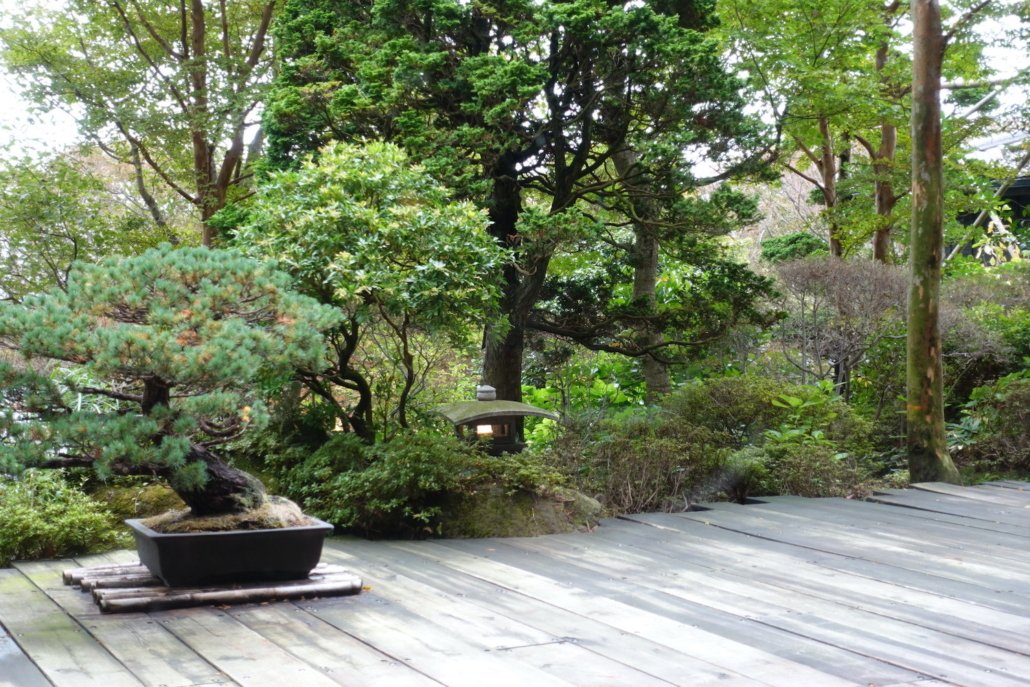
my husband and I set off for dinner.
Kaiseki ryori (dinner)
As I had explained earlier in my post what this is about, I will limit myself primarily to pictures. We had in any case a memorable one-of-a-kind experience!
Misaki awaited us in the basement where the semi-private area is and led us to our space. Here already our first course had been placed, an artwork for the eye and a delight for the palate!
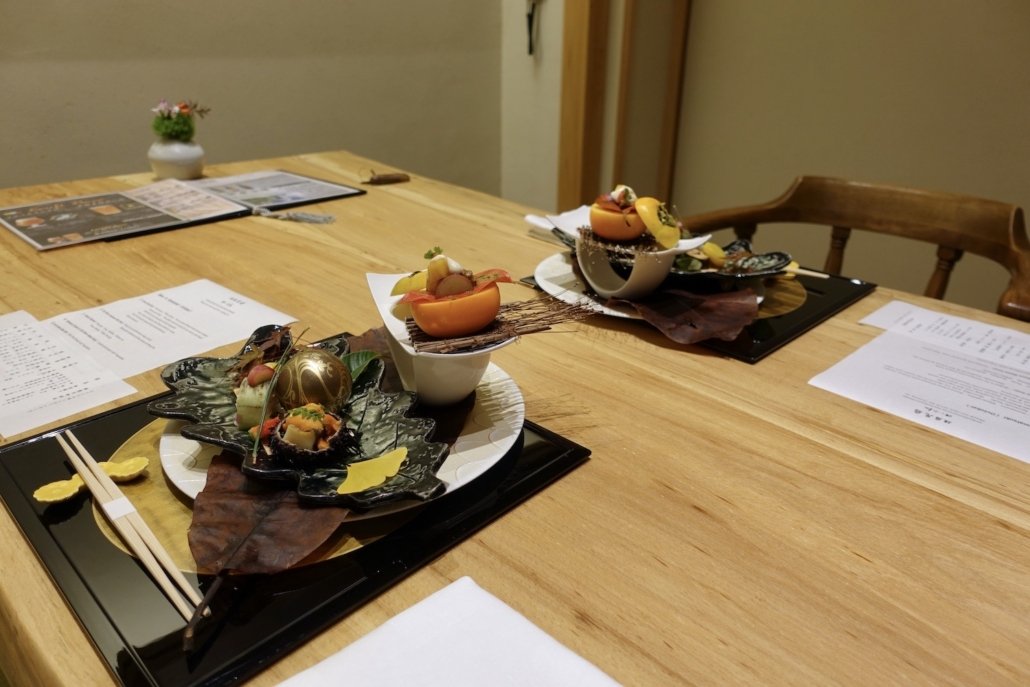
Our personal attendant served us one course after the other, with explanations. She was eager to answer our questions too, after all it was our first kaiseki meal ever. And we dined like royalty!
Here is the menu of our first evening with all the dishes.
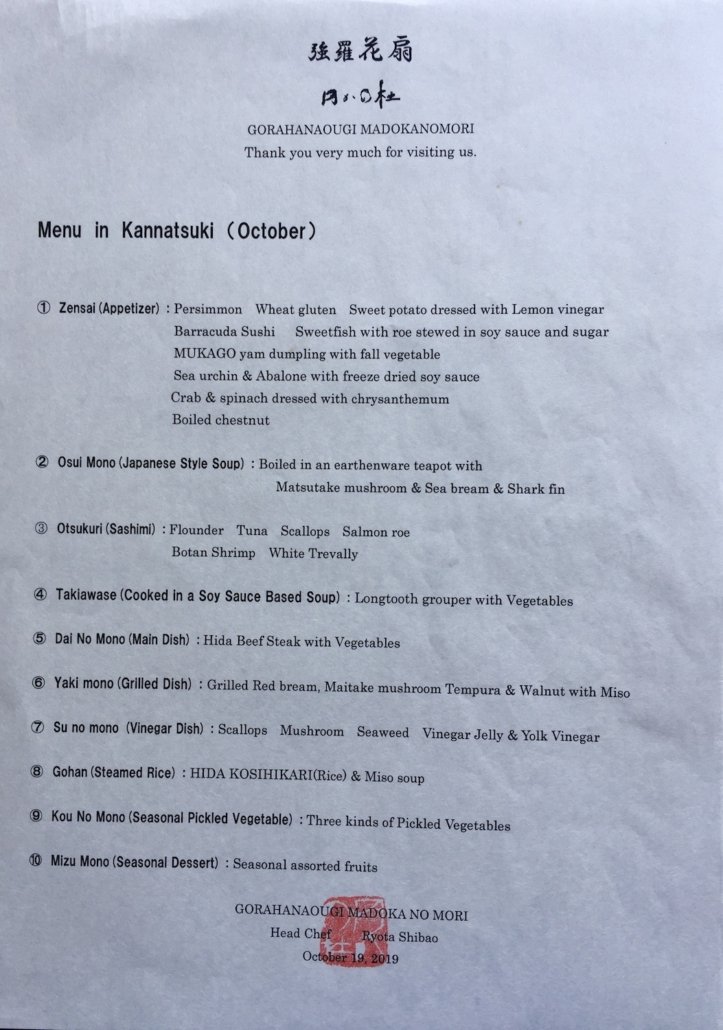
I let the pictures do the talking!
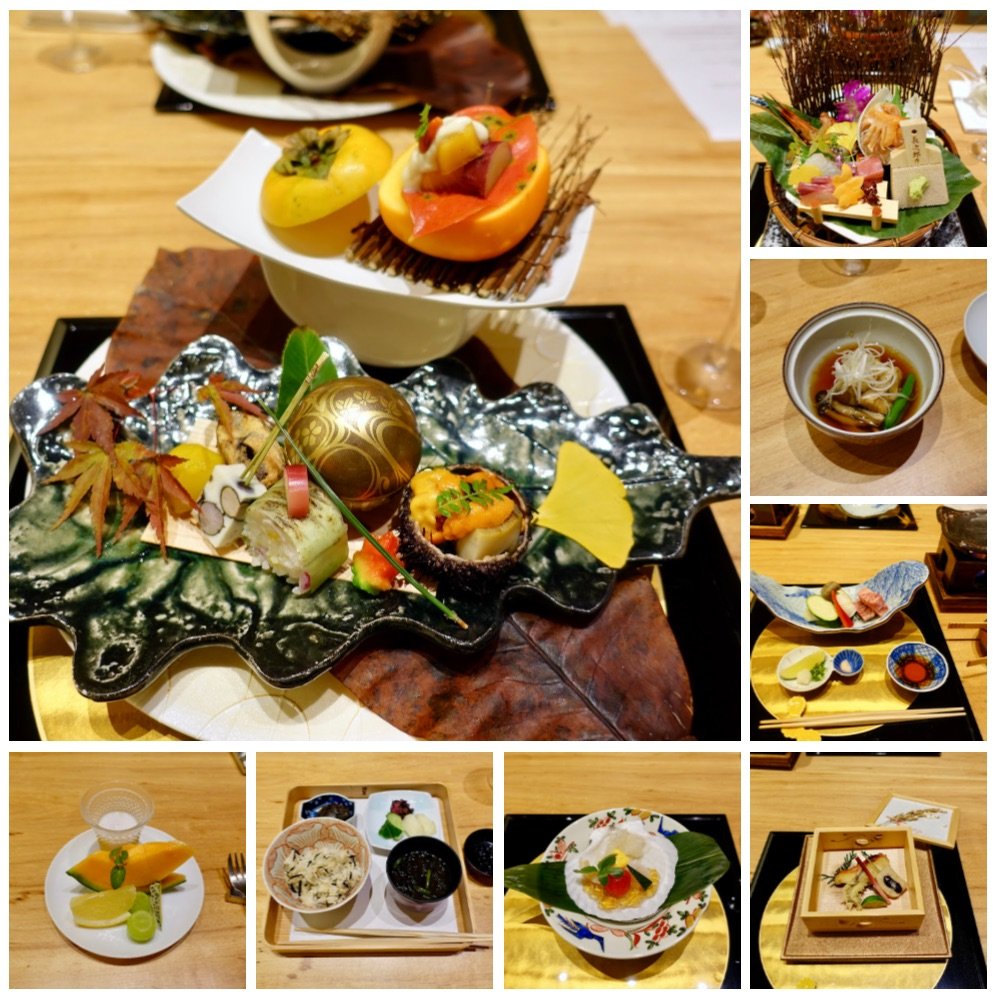
Japanese breakfast
The breakfast was a similar affair, but shorter with fewer dishes, yet it was still an impressive number of plates and bowls! We could choose between rice and porridge to accompany the feast. For our western taste, the traditional Japanese breakfast focused a bit too much on fish. My husband and and I like seafood but not necessarily for breakfast. Notwithstanding that, it was something that we will remember forever!
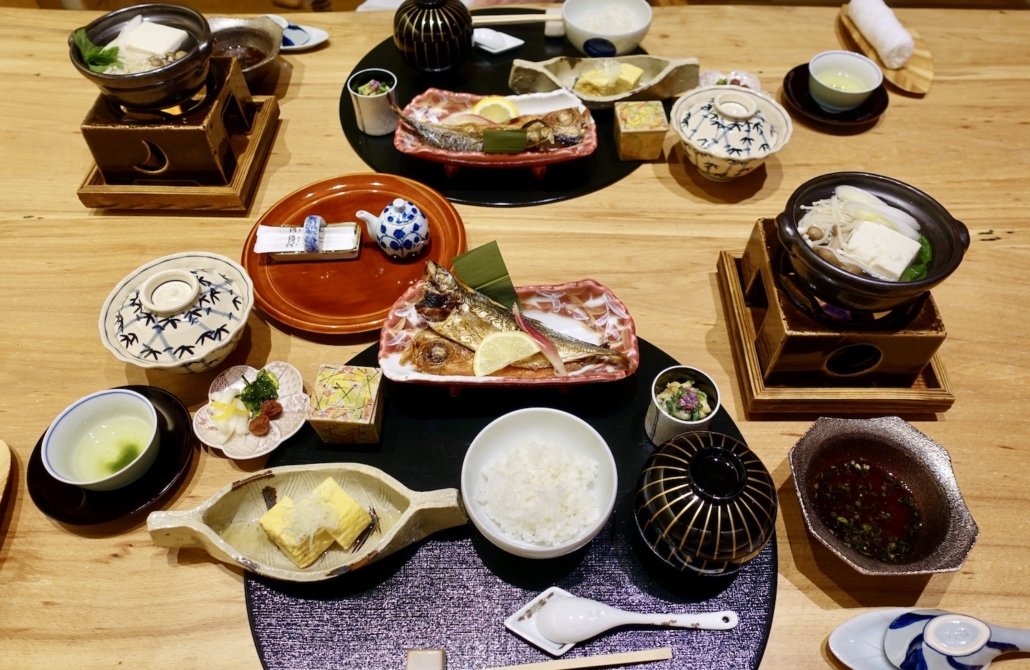
To let you know how other breakfasts at ryokans with more western influences might be, here two pictures from the two other ryokans we stayed. The first one is from Takimi Onsen Inn in Nagiso (Kiso Valley), the second one from Honjin Hiranoya Kachoan in Takayama.

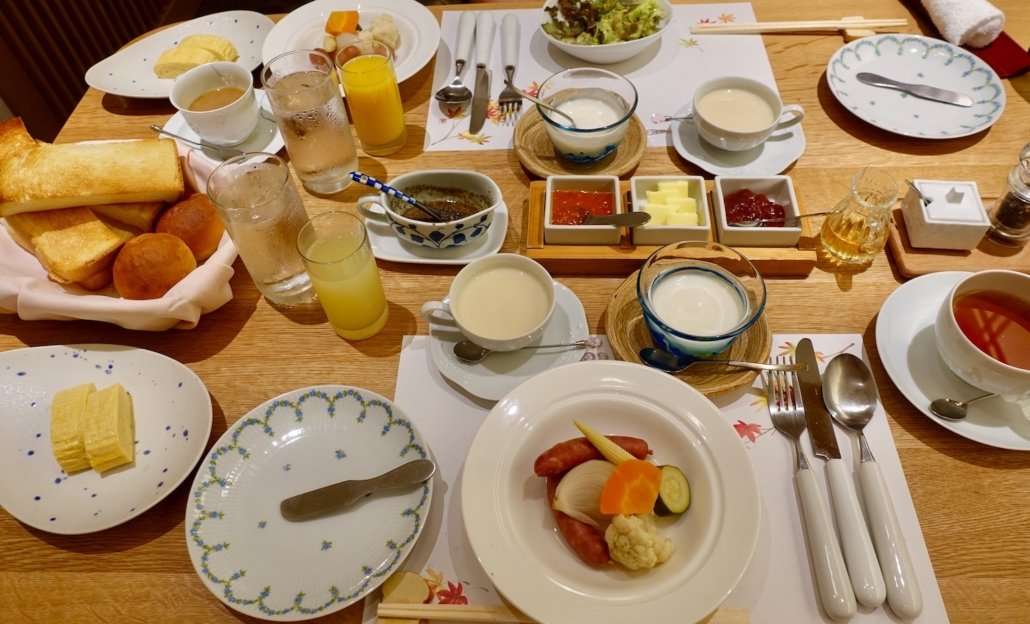
Attention, both previous photos are not from Madoka no Mori!
Ambiance/Service
Madoka no Mori’s serene ambiance of harmony and purity impressed me much. Staying here makes you relax and let go of all the tension you might feel. And the staff was so friendly and helpful and at the same time discrete and unassuming. Our personal attendant, Misaki, went to great lengths to make our stay pleasant. We were lucky that she was assigned to us!
Overall
Staying at Madoka no Mori allowed us to fully immerse in an important part of the Japanese lifestyle. And this in one of the best ways imaginable! Everything my husband and I encountered here was just great, from the peaceful atmosphere to the immaculate staff and from the beautiful room to the unique culinary delights.
When traveling Japan, you should stay not only at one ryokan but opt for two of these traditional Japanese guesthouses at least. There are simply too many different kinds of those, and all of them are much more than just a place to sleep!
Next and last post about Japan
After reporting on serval aspects of our three-week Japanese journey (itinerary, hotels, dining-out, restaurants and now the ryokan experience), there is one last thing I want to highlight further. And this is about two areas in Japan that are a fair bit away from major cities. They can best be described as untouched rural Japan. I speak of the Kiso Valley in southwestern Nagano
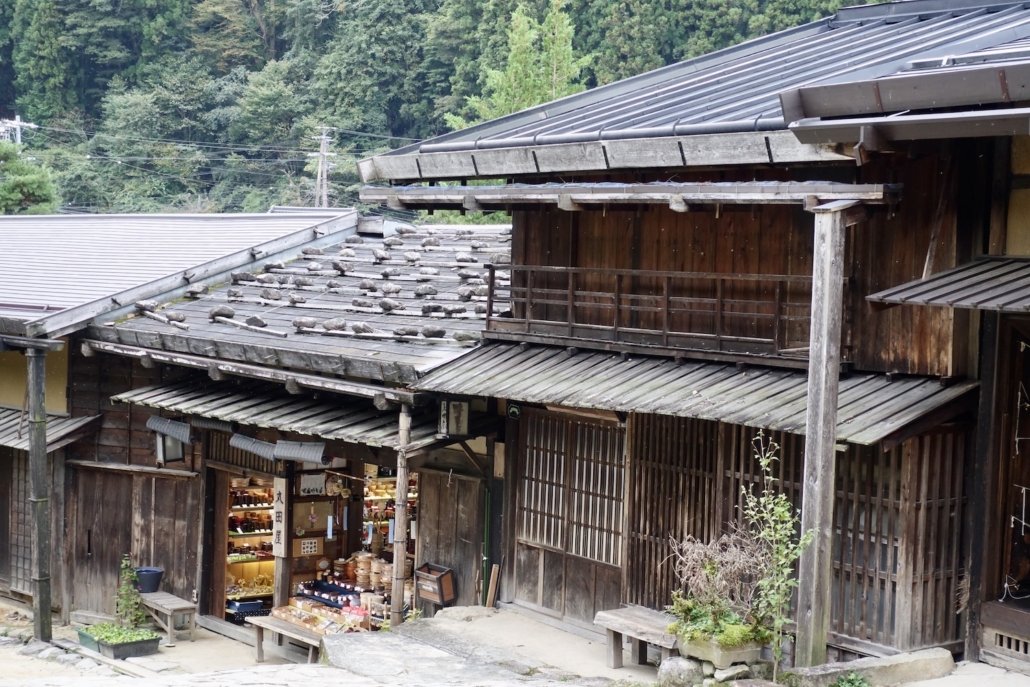
and Yakushima Island just off Kiyushu’s southern coast.
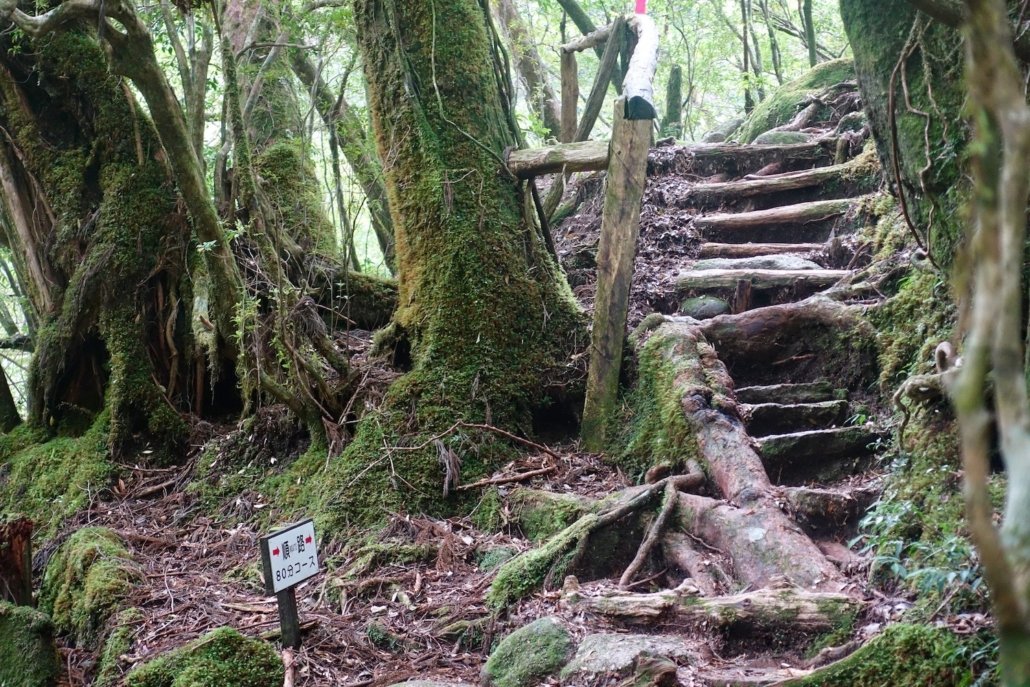
Date of visit: November 2019
Pin it for later
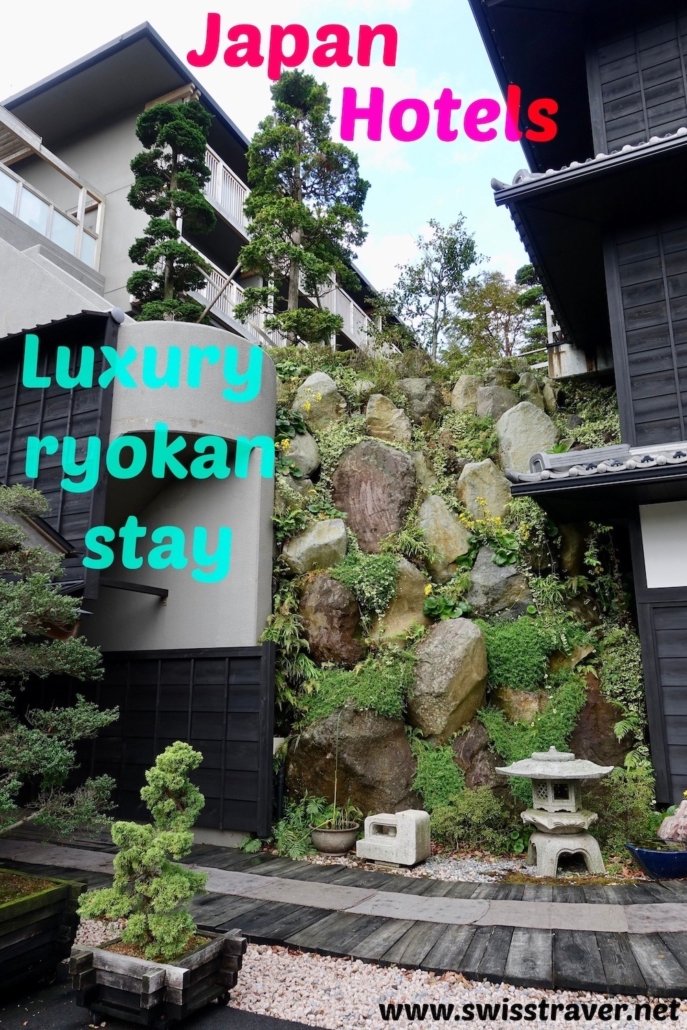
The post How it is staying at a luxury ryokan (Japanese guesthouse) first appeared on Swiss Traveler

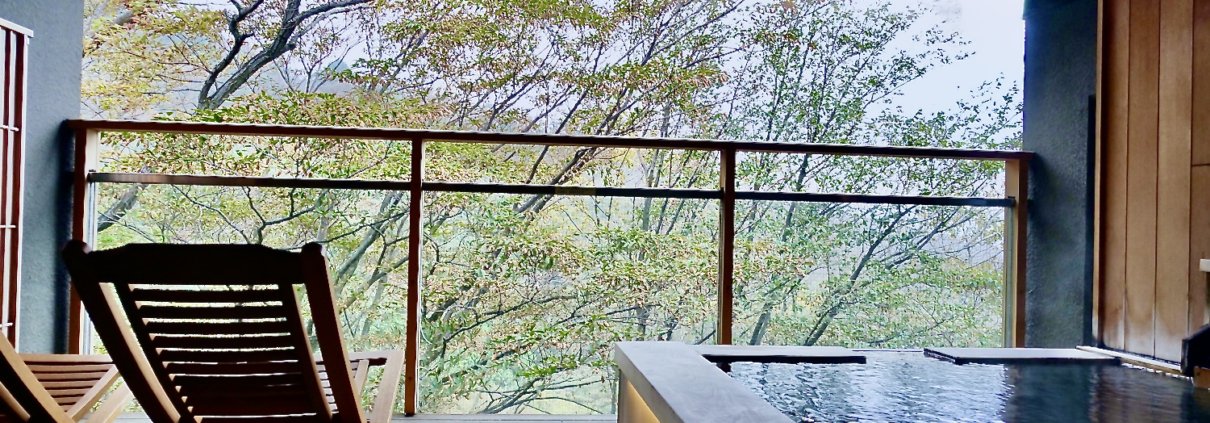
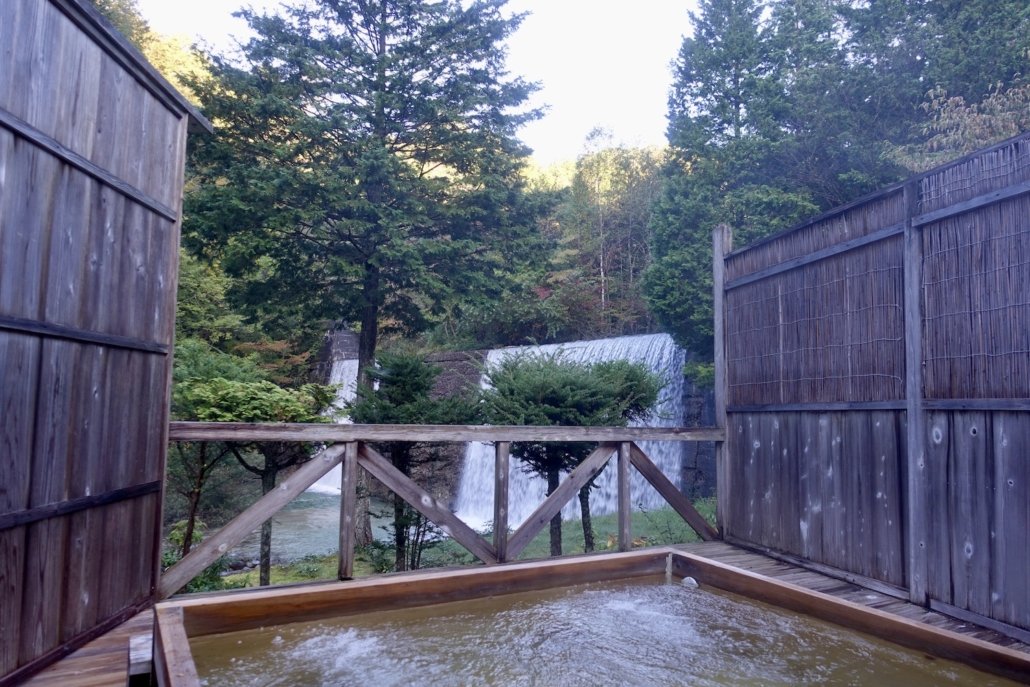


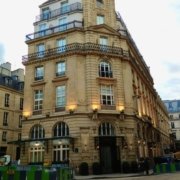
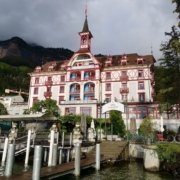

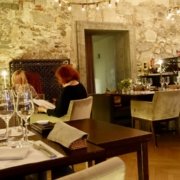


Leave a Reply
Want to join the discussion?Feel free to contribute!